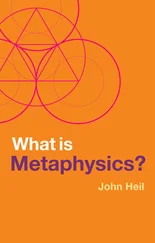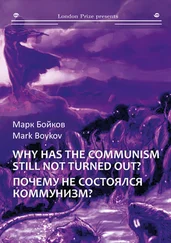So the questions are: What duty do we have to live properly? What responsibility do we have for the consequences if we do not? How much can we blame on our parents, or society, or whomever—and even so, what responsibilty do we bear? Should society pay for prevention but not for remediation of avoidable outcomes? Should we force special responsibilities on people with particular vulnerabilities?
These questions aren’t new, but they will become more urgent as we get better at predicting or avoiding outcomes. There are no simple answers to define or to allocate responsibility. That’s why we should be worried.
ANDRIAN KREYE
Editor, The Feuilleton (arts and essays), of the German daily Süddeutsche Zeitung , Munich
There are no cathartic moments in evolution. There are plenty in faith and ideology. With the former being a mostly private affair in modern society and the latter a remnant of the 20th century, one should not have to worry about the lure of catharsis anymore. Still there it is, keeping those doors to irrational groupthink open by a tiny crack.
It might not be possible ever to get rid of this powerful lure, though; in the Western world this mindset has been embedded in the cultural DNA too deeply. There is no art form lacking built-in mechanisms that simulate catharsis. Most have been derived from religion.
Take the best-known and most powerful of examples—Beethoven’s Ninth Symphony. There are good reasons why this work is performed whenever there is the need to soothe a grieving collective or enhance a moment of national unity. After the attacks of September 11, there were countless performances of the piece worldwide. The divided, cold-war Germany played it whenever sports teams from the two sides joined forces. The European Union has chosen the “Ode to Joy” from the fourth movement as its anthem. It’s easy to hear how this works. The key of the Ninth is the tragic D-minor. Over the course of an hour, this somber mood is lifted slowly, until the fourth movement breaks into the jubilant chorus based on Friedrich Schiller’s poem. This is solid 19th-century instant catharsis. And there’s no doubt where this joy comes from. The poem begins, “Joy, beautiful spark of Gods.”
Just as Beethoven’s Ninth resorts to the dynamics of a church service, with a sermon promising a rapturous end to all worries, pop culture riffs on the spiritual lift. Take a great rock or soul song or concert. In the perfect case, there will be an exhilarating opening, after which the rhythm will slow down below the speed of a heartbeat. If the drumming and the groove are convincing, the human pulse will adapt. Step by step, the music will accelerate and the rhythms speed up past the regular heartbeat. Lighting, movement, and volume will help to create a state of ecstasy. Those tricks are borrowed from faiths like Voodoo or Pentecostalism. Ever wonder why U2 concerts are always experienced as such an ecstatic event? They openly borrow from the traditions of Catholicism.
The same leitmotifs of catharsis can be found in literature, theater, and film. The classic three-act drama still taught in film school is built like a holy book: setup, conflict, resolution. In narrative art, catharsis isn’t simply a reference. When Aristotle came up with the structure of tragedy in the 4th century B.C., the catharsis of the audience’s emotions was his avowed goal.
The urge to experience catharsis is, of course, so strong because it always embodies salvation. After the Rapture, there is Paradise. This dynamic has even transcended to the scientific. What else would the Singularity—the belief that artificial intelligence will at some point surpass human intelligence—be, but a technological Rapture absolving humanity from being the ultimate responsible party on this planet?
The problem with catharsis, though, is that it will always remain an empty promise. There is no paradise, no salvation, no ultimate victory. Progress, be it biological, scientific, or social, is a tedious process of trial and error. If we work toward an unobtainable goal, much effort is wasted, and the appearance of false prophets is almost a given. Catharsis thus becomes the ultimate antagonist of rational thinking. If there is Paradise in the Beyond, why bother with the Here-and-Now?
But there’s no way to change our mental blueprint. The simulation of catharsis is the very way in which we enjoy art, music, stories, even sports. Every joke’s punch line, every hook of a song, promises this tiny moment of release. That is all there is, after catharsis. To ask us to refrain from giving in to this urge would lead to joyless forms of Puritanism. If we are aware of the patterns and dynamic of catharsis, though, it is possible to see the thresholds of escapism.
TERRY GILLIAM
Screenwriter, animator, actor; member, Monty Python; director, Brazil, Fear and Loathing in Las Vegas
I’ve given up worrying. I merely float on a tsunami of acceptance of anything life throws at me… and marvel stupidly.
DANIEL GOLEMAN
Psychologist; author, Leadership: The Power of Emotional Intelligence
Human systems of transportation and energy, construction, and commerce, a scientific consensus tells us, are degrading the global systems that support life on our planet. This damage poses an enormous long-term threat to life as we know it. And yet these changes are too macro or micro to be noticed directly. The amygdala tunes out.
That indifference to danger bespeaks a blind spot built into the brain. Our neural system for threat was attuned to dangers of the Pleistocene: the rustling in the thicket that might signal a predator lurking. But we have no perceptual apparatus or circuitry for alarm that tunes us to the dangers we now face as a species. The brain’s perceptual misalignment in recognizing dangers has reached a historic danger point. The human gene pool was robust enough to survive the failure of people in the Middle Ages to see the dangers in rats and fleas as vectors for the Black Plague. But today our collective blind spot has set in motion long-term dynamics in geophysical systems, such as the carbon cycle, that will have devastating impacts not just on humans but on the survival of countless other species—and will take hundreds of years to reverse.
Much of the ongoing damage stems from systemic side effects of our industrial platforms. For instance, we make concrete, bricks, glass, and steel by heating ingredients at very high temperatures for long periods—a technology with roots in the Bronze Age. When these methods were developed, no one saw the coming of the current Anthropocene Age, where human activity pushes systems like the nitrogen and carbon cycles toward the brink.
Now that we can conceptualize the dangers we face, ideally we would put on the brakes. The failure of global meetings at Kyoto and Copenhagen to come to international agreements on slowing global warming is but one symptom of our blind spot at play. But a purely intellectual understanding of a danger does not mobilize our motivational systems all that well.
I happened to attend a closed-door meeting of the heads of sustainability for more than two dozen global companies. Each made a report of what they were doing in their supply chains to combat global warming—a surprisingly encouraging list. But all were agreed that there was a common obstacle to pushing much further: Customers do not care.
To be sure, there are more and more signs that clever ways around our blind spot can be found. For instance, an industrial ecologist at the Harvard School of Public Health has developed “handprints.” Instead of tracking all the bad news about our carbon footprint, Handprinter puts a positive spin on our environmental impacts, tracking all the good we do. The program lets you measure every action you take that lowers your carbon footprint, and encourages you to keep growing that number.
Читать дальше












